Research & pedagogy
Working with our xConsortium of university partners, edX is empowering research on pedagogy or learning about learning.
The online environment provides a powerful platform to conduct experiments, exploring how students learn and how faculty can best teach using a variety of novel tools and techniques.
Fundamental questions include:
- What motivates students to learn and persist?
- What helps students retain knowledge?
- What are the best ways to teach complex ideas?
- How can we assess what students have learned?
- What is best taught in person vs. online?
By carefully assessing course data, from mouse clicks to time spent on tasks, to evaluating how students respond to various assessments, researchers hope to shed light on how learners access information and master materials, with the ultimate aim of improving course outcomes.
We are not only expanding access to knowledge, but developing best practices to enhance the student experience and improve teaching and learning both on campus and online.
Below you will find a sampling of research papers authored by our xConsortium partners:
Transforming Advanced Placement High School Classrooms Through Teacher-Led MOOC Models
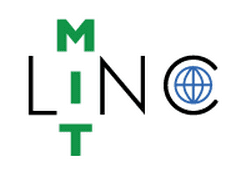
The Massive Open Online Course (MOOC) movement-which has typically focused on independent, online learners-has additional opportunities to reach students and teachers in traditional classrooms. Through collaboration between Davidson College, College Board, and edX, we report early findings of a teacher-led model utilizing open online materials in Advanced Placement (AP) classrooms. From the summer of 2014 to present, Davidson Next modules covering AP Calculus, AP Macroeconomics, and AP Physics have been delivered to high school teachers and students in three phases: 1) Pilot: a program prototyping content with teachers and students in North Carolina high schools, 2) edX: open online releases of content through edX.org, and 3) CCX: a new custom-course tool (CCX) offering private instances of MOOC material to teachers for use with students. We report enrollment and backgrounds of learners in each phase, and offering indications our content benefits student performance on externally validated AP exams.
A Preliminary Assessment of an MIT Campus Experiment with an edX Online Course: The Pilot of 6.S064 Circuits and Electronics

During the Fall Semester of 2016 EECS (Electrical Engineering and Computer Science) department, with approval from the MIT Committee on the Undergraduate Program (CUP), piloted the subject 6.S064, allowing MIT students to complete the edX version of 6.002 Circuits and Electronics for course credit. The primary rationale for offering 6.S064 was to provide flexibility in learning for students with scheduling conflicts. Flexibility was also intended to reduce student stress. This report provides a descriptive assessment of the student experiences and learning in this subject based on edX system data, instructor data, and student surveys and interviews.
HarvardX and MITx: Four Years of Open Online Courses -- Fall 2012 - Summer 2016
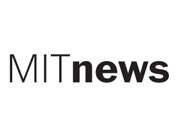
This “Year 4 Report” extends these earlier findings to four complete years of HarvardX and MITx courses on edX, resulting in one of the largest surveys of MOOCs to date: 290 courses, 245 thousand certificates, 4.5 million participants, 28 million participant-hours, and 2.3 billion events logged online. We present our findings in a series of nine exhibits that address questions about the evolution of the MOOC movement from its birth in 2012, through its current adolescence.
Can Physics Be Taught Like Soccer?

Our nation is rather good at grooming youngsters to become excellent athletes. So a Chinese physicist who is doing his post-doctoral research at the Massachusetts Institute of Technology wondered if college physics could be taught the same way that coaches teach soccer, and get better results. Just the way that great soccer coaches break the game down into specific skills, such as passing, receiving and shooting, and have kids practice these skills until they master them, Zhongzhou Chen is trying to break down the field of physics into simpler skills that students can master through practice.
Leveraging MOOCs for Credit-Granting Institutions: Results from a Community College Pilot Study.
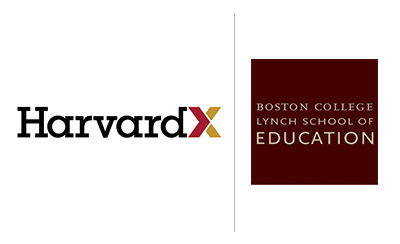
Despite widespread interest, excitement, and skepticism about massive online open courses (MOOCs) from the post-secondary educational community, few studies describe the ways MOOCs have been implemented in residential classes and their impacts. This paper explores the development, implementation, and evaluation results from an initial empirical study exploring the efficacy of integrating massive online open course (MOOC) content in a traditional, for-credit community college setting. In addition to demonstrating the “proof-of-concept” of this “blended” approach with students, the paper highlights some of the learning conditions, obstacles, and opportunities in using MOOC resources in residential learning, particularly for underserved student populations.
HarvardX and MITx: Two Years of Open Online Courses Fall 2012-Summer 2014
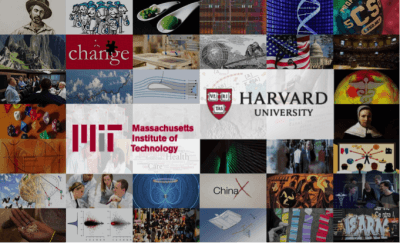
What happens when well-known universities offer online courses, assessments, and certificates of completion for free? Early descriptions of Massive Open Online Courses (MOOCs) have emphasized large enrollments, low certification rates, and highly educated registrants. We use data from two years and 68 open online courses offered by Harvard University (via HarvardX) and MIT (via MITx) to broaden the scope of answers to this question. We describe trends over this two-year span, depict participant intent using comprehensive survey instruments, and chart course participation pathways using network analysis. We find that overall participation in our MOOCs remains substantial and that the average growth has been steady. We explore how diverse audiences — including explorers, teachers-as-learners, and residential students — provide opportunities to advance the principles on which HarvardX and MITx were founded: access, research, and residential education.
Enrollment in MITx MOOCs: Are We Educating Educators?

At MITx (MIT's MOOC organization), early MOOC experiments have indicated that teachers are indeed enrolling. The MITx course known as 8.MReV: Mechanics Review, which derived from an introductory on-campus physics course at MIT, was initially advertised as a challenging course for high school students. On completion, however, course staff recognized that high school teachers were an active contingent.10 In response, the course team partnered with the American Association of Physics Teachers to offer continuing education units in subsequent offerings.
Staggered Versus All-At-Once Content Release in Massive Open Online Courses: Evaluating a Natural Experiment
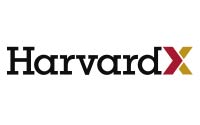
We report on an experiment testing the effects of releasing all of the content in a Massive Open Online Course (MOOC) at launch versus a staggered release. In 2013, HarvardX offered two “runs” of the HeroesX course: In the first, content was released weekly over four months; in the second, all content was released at once. We develop three operationalizations of “ontrackedness” to measure how students participated in sync with the recommended syllabus. Ontrackedness in both versions was low, though in the second, mean ontrackedness was approximately one-half of levels in the first HeroesX. We find few differences in persistence, participation, and completion between the two runs. Controlling for a students’ number of active weeks, we estimate modest positive effects of ontrackedness on certification. The revealed preferences of students for flexibility and the minimal benefits of ontrackedness suggest that releasing content all at once may be a viable strategy for MOOC designers.
Computer-Assisted Reading and Discovery for Student Generated Text in Massive Open Online Courses

Dealing with the vast quantities of text that students generate in a Massive Open Online Course (MOOC) is a daunting challenge. Computational tools are needed to help instructional teams uncover themes and patterns as MOOC students write in forums, assignments, and surveys. This paper introduces to the learning analytics community the Structural Topic Model, an approach to language processing that can (1) find syntactic patterns with semantic meaning in unstructured text, (2) identify variation in those patterns across covariates, and (3) uncover archetypal texts that exemplify the documents within a topical pattern. We show examples of computationally-aided discovery and reading in three MOOC settings: mapping students’ self-reported motivations, identifying themes in discussion forums, and uncovering patterns of feedback in course evaluations.
Learning in an Introductory Physics MOOC: All Cohorts Learn Equally, Including an On-Campus Class

The recent release of hundreds of free online courses in MOOCs (massive open online courses) by organizations such as Coursera, edX, and Udacity has been so dramatic that an article in the New York Times proclaimed 2012 the “Year of the MOOC” (Pappano, 2012). These MOOCs, often digitizations of standard, relatively introductory courses from top 50 universities (and especially MIT, Harvard, Berkeley, and Stanford), have provoked multidimensional discussions and special issues of various publications. Nevertheless, few studies have attempted to use MOOC data to address the central question: “is there learning in MOOCs?”
The Transformative Potential of Blended Learning Using MIT edX’s 6.002x Online MOOC Content Combined with Student Team-Based Learning in Class

This pilot implemented a blended model of learning by merging content from an online MOOC (Massive Open Online Course) with in-class, team-based instruction as part of a required undergraduate circuit theory course. The central objective of this pilot was to examine how adaptation of the new MIT edX 6.002x (Electronics and Circuits) MOOC-content in a flipped model of teaching might improve student learning in a credit-bearing college course. Multiple objectives for this pilot included: (1) improve the department’s typical passage rate of 59% for this course; (2) improve students’ retention rate; (3) shorten students’ time-to-degree; (4) improve the quality of the content of the course; and (5) reduce the prerequisite contribution for successful passage of subsequent courses. Student pass rates from the blended Fall 2012 pilot jumped to 91%, as compared to a 59% passage rate from the previous year’s traditional face-to face lecture class. It appears that adaptation of high quality MOOC content using a blended approach and in conjunction with a highly structured in-class team-based approach can produce significant benefits in transforming student learning and success.
Privacy, Anonymity, and Big Data in the Social Sciences

Open data has tremendous potential for science, but, in human subjects research, there is a tension between privacy and releasing high-quality open data. Federal law governing student privacy and the release of student records suggests that anonymizing student data protects student privacy.
Developing and Implementing Effective Instructional Stratgems in STEM

Striving for enriched content and better and more effective instructional delivery models are sincere desires of every faculty member. The advent of Massive Online Open Courses (MOOCs) has opened new possibilities. One of the innovative ways of utilizing MOOCs, especially for challenging subjects and more challenging courses, is as a “flipped classroom”. These new delivery models can enhance student engagement, improve student retention, and reduce significantly student failure rate. This is even more critical today with millennial students, because keeping their attention for a traditional 50 to 75 minutes in the lecture hall and having them listen passively to their lecturer is not realistic.
Predicting Student Retention in Massive Open Online Courses using Hidden Markov Models

A Massive Open Online Course (MOOC) is a large-scale web-based course that is offered to a very large number of par- ticipants. In the last few years, MOOCs have seen an increase in popularity due to the emergence of several well-designed online-education websites, such as edX and Coursera, and rising interest from top universities, such as MIT, Stanford and UC Berkeley, to open a variety of their courses to the wider public. The appeal for end consumers lies in the accessibility of high-quality education from any location regardless of personal background. MOOCs typically contain short lecture videos (10-15 minutes), as well as quizzes and homework assignments to assess students’ understanding of subject matter.
MITx Working Papers
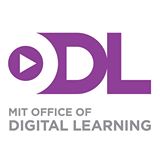
The first three MITx courses launched in the Fall of 2012, seven more courses launched in the Spring of 2013, and one in the Summer of 2013. As of this date, fifteen more courses recently completed or are about to commence, and dozens more modules and courses are in development. Now that data for the first 11 MITx courses have been delivered and analyzed, this is an opportune time to examine these first offerings, in order to inform ongoing course design and research.
Bringing student backgrounds online: MOOC user demographics, site usage, and online learning
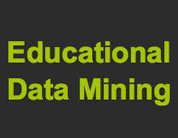
MOOCs gather a rich array of click-stream information from students who interact with the platform. However, without student background information, inferences do not take advantage of a deeper understanding of students’ prior experiences, motivation, and home environment. In this poster, the authors investigate the predictive power of student background factors as well as student experiences with learning materials provided in the first MITx course, “Circuits and Electronics.”
Studying Learning in the Worldwide Classroom: Research into edX’s First MOOC
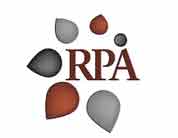
“Circuits and Electronics” (6.002x), which began in March 2012, was the first MOOC developed by edX, the consortium led by MIT and Harvard. Over 155,000 students initially registered for 6.002x, which was composed of video lectures, interactive problems, online laboratories, and a discussion forum. As the course ended in June 2012, researchers began to analyze the rich sources of data it generated.
An Integrated Framework for the Grading of Freeform Responses

Massive open online classrooms (MOOCs) have the potential to educate millions of people around the world. Initial MOOC courses were in science and engineering disciplines, where the problems involve constrained choices and can easily be graded automatically. MOOCs must still find ways to deal with essays and short answers, which are required for classes in humanities and the social sciences, and are useful to a variety of other disciplines.
Participation And performance In 8.02x Electricity And Magnetism: The First Physics MOOC From MITx
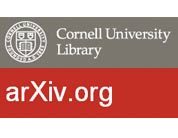
Massive Open Online Courses are an exciting new avenue for instruction and research, yet they are full of unknowns. In the Spring of 2013, MITx released its first introductory physics MOOC through the edX platform, generating a total enrollment of 43,000 students from around the world. We describe the population of participants in terms of their age, gender, level of education, and country of origin, highlighting both the diversity of 8.02x enrollees as well as gender gap and retention.
Teaching Electronic Circuits Online: Lessons from MITx’s 6.002x on edX
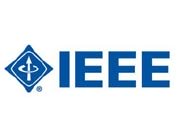
A New Approach to Developing Interactive Software Modules through Graduate Education

The authors discuss a set of fifteen new interactive, educational, online software modules developed by Harvard University graduate students to demonstrate various concepts related to astronomy and physics. Their achievement demonstrates that online software tools for education and outreach on specialized topics can be produced while simultaneously fulfilling project-based learning objectives.
Changing “Course”: Reconceptualizing Educational Variables for Massive Open Online Courses
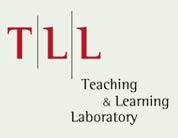
Increases in the amount and richness of available educational data require researchers to expand the ways in which they define familiar variables. The authors illustrate that the advent of massive open online courses (MOOCs) is such juncture.
Development of a Framework to Classify MOOC Discussion Forum Posts: Methodology and Challenges

The purpose of this paper is to describe the methodology used to confront one of the challenges associated with analyzing discussion forum data from the inaugural edX MOOC, "Circuits and Electronics." The authors detail the development and testing of a framework to classify large amounts of MOOC data into a manageable number of categories so that further analysis con be conducted in targeted areas of interest.
MOOCdb: Developing Data Standards for MOOC Datascience

In this position paper, the authors advocate harmonizing and unifying disparate “raw” data formats by establishing an open-ended standard data description to be adopted by the entire education science MOOC oriented community. The concept requires a schema and an encompassing standard which avoid any assumption of data sharing. It needs to support a means of sharing how the data is extracted, conditioned and analyzed
Adapting Bayesian Knowledge Tracing to a Massive Open Online Course in edX

In this paper the authors show how existing learner modeling techniques based on Bayesian Knowledge Tracing can be adapted to the inaugural course, 6.002x: Circuits and Electronics, on the edX MOOC platform. They identify three distinct challenges to modeling MOOC data and provide predictive evaluations of the respective modeling approach to each challenge.